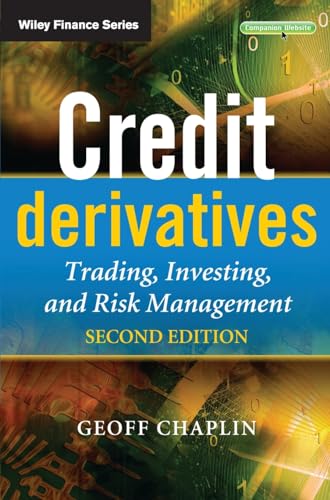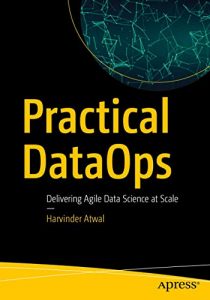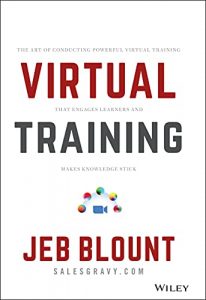1. Credit Derivatives: Trading, Investing, and Risk Management
This book by Geoff Chaplin is an invaluable resource for anyone looking to understand the dynamic world of credit derivatives. It not only covers the fundamental concepts but also delves deep into the practices of trading and risk management. The author’s expert analysis and clear explanations make complex topics comprehensible for both industry veterans and newcomers. With practical examples and case studies, this book serves as a practical guide that provides insights into contemporary issues in credit derivatives. It’s a must-read for those aiming to enhance their investment strategies and manage risks effectively.
2. Credit Derivatives Pricing Models: Models, Pricing and Implementation
Philipp J. Schönbucher offers a comprehensive exploration of various pricing models used in credit derivatives in this essential book. He emphasizes the importance of understanding financial theories and how they apply in the real world of finance. Readers will gain insights into model constructions, sensitivities, and numerical methods essential for pricing credit derivatives. Whether you are a financial analyst or a risk manager, this book provides the tools to navigate complex pricing structures with clarity and confidence. It’s equipped with practical implementations that are valuable to practitioners.
3. Derivatives Pricing and Credit Exposure Modelling: Python Prototype of XVA for Practitioners (2.0)
In this modern guide, Lilan Li introduces practitioners to derivative pricing and credit exposure modeling through a practical Python framework. This book addresses not only theoretical aspects but also focuses on implementation, making it a crucial addition to financial professionals’ libraries. With the growing prevalence of quantitative methods in finance, understanding Python applications in pricing models is invaluable. Li’s clear style and structured approach ensure that readers can apply complex concepts immediately to their workflows, enhancing their analytical capabilities dramatically.
4. Credit Derivatives: A Guide to Instruments and Applications
This classic by Janet M. Tavakoli is perfect for those beginning their journey into the world of credit derivatives. It provides a foundational understanding of the instruments themselves, along with their various applications in today’s financial markets. Tavakoli’s engaging writing style makes it easy to digest complex topics while providing practical insights that are applicable. This guide serves as an excellent starting point for students and young professionals, empowering them with the knowledge to navigate the intricacies of credit derivatives successfully.
5. Credit Derivatives: Understanding and Working with the 2014 ISDA Credit Derivatives Definitions
Edmund Parker’s book is indispensable for professionals dealing with credit derivatives and who need a thorough understanding of the ISDA definitions. As the 2014 ISDA definitions reflect the most current standards in credit derivatives, this book provides detailed explanations and insights into practical applications. Parker’s work is thorough, making it a vital reference for legal and compliance teams within financial institutions. This text not only explains the terms but also conveys the intricacies of working with such definitions in various scenarios encountered in the financial sector.
6. Credit Derivatives and Structured Credit: A Guide for Investors
This text, written by Richard Bruyere and his co-authors, is a thorough guide for investors venturing into the complex world of structured credit. With numerous contributors, the book provides diverse perspectives that enrich the reader’s experience. They discuss instrument structures, risk, and statistical methods relevant to structured credit products in an easily understandable manner. It’s a fantastic resource for both novice and experienced investors looking to deepen their knowledge and adjust their investment strategies in structured credit markets.
7. Modelling Single-name and Multi-name Credit Derivatives
Dominic O’Kane’s book is a significant contribution to the understanding and quantification of credit risk. By focusing on both single-name and multi-name credit derivatives, the author ultimately bridges theoretical knowledge with practical application. This book is beneficial for quant analysts and risk managers, offering them various models that can be employed successfully in market practice. O’Kane’s pragmatic approach and focus on market relevance make it a vital resource for any professional looking to enhance their modeling skills.
8. Structured Credit Products: Credit Derivatives and Synthetic Securitisation
Choudhry and Duffie bring a wealth of knowledge to the subject of structured credit products with this educational text. Their deep dive into the mechanics of credit derivatives and securitization offers readers a comprehensive look at modern finance’s complex tools. This book is particularly useful for those involved in risk management and investment as it covers a range of products and their applications thoroughly. Understanding the mechanics of structured products is imperative, making this text essential for finance professionals.
9. Credit Derivatives: CDOs and Structured Credit Products
Satyajit Das’s exploration of CDOs and structured credit products provides clarity in a challenging market landscape. Das breaks down complex concepts into easily digestible segments, making it an important read for anyone involved in corporate finance or investment. The book offers not only theoretical foundations but also case studies that illustrate practical applications and challenges. This is a critical text for financial professionals wishing to broaden their understanding of structured finance.
10. Credit Derivatives: Application, Pricing, and Risk Management
Gunter Meissner presents a comprehensive narrative that intertwines application, pricing, and risk management of credit derivatives. This book serves as a complete guide for risk practitioners and offers insights that are applicable across various scenarios. Readers will find that it not only discusses the theoretical framework but also emphasizes the practical aspects of credit derivatives, making it ideal for those in the industry. Meissner’s thorough approach ensures that readers walk away with a holistic understanding equipped with both theory and practical know-how.














































